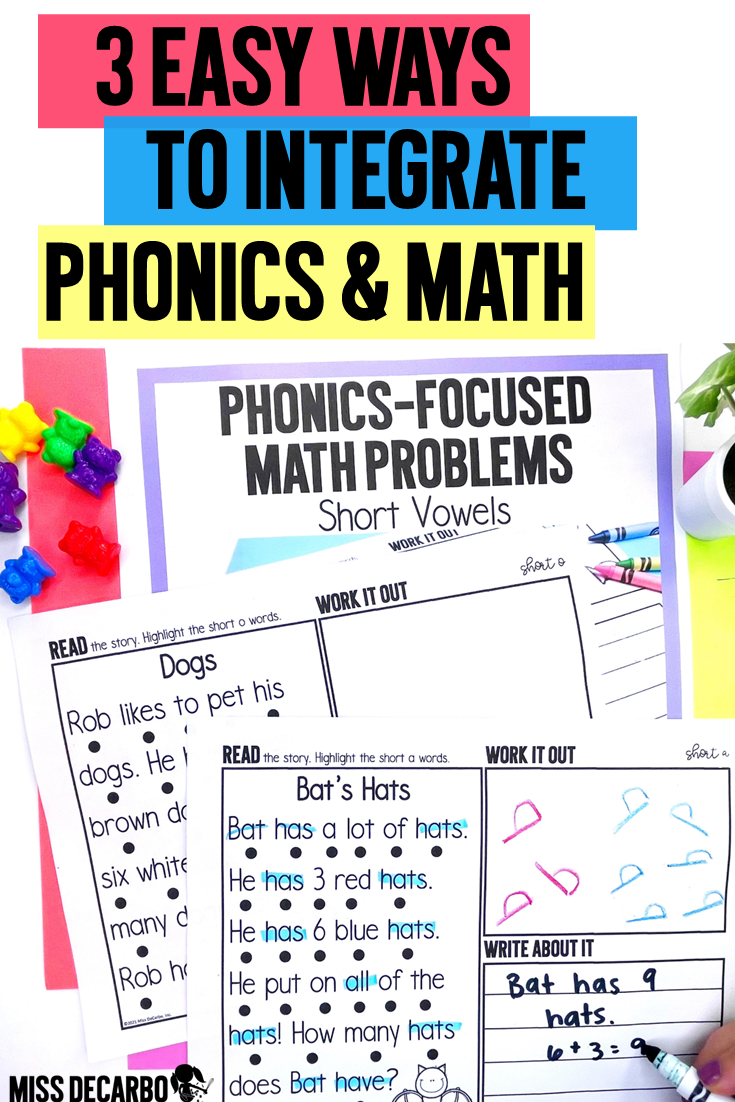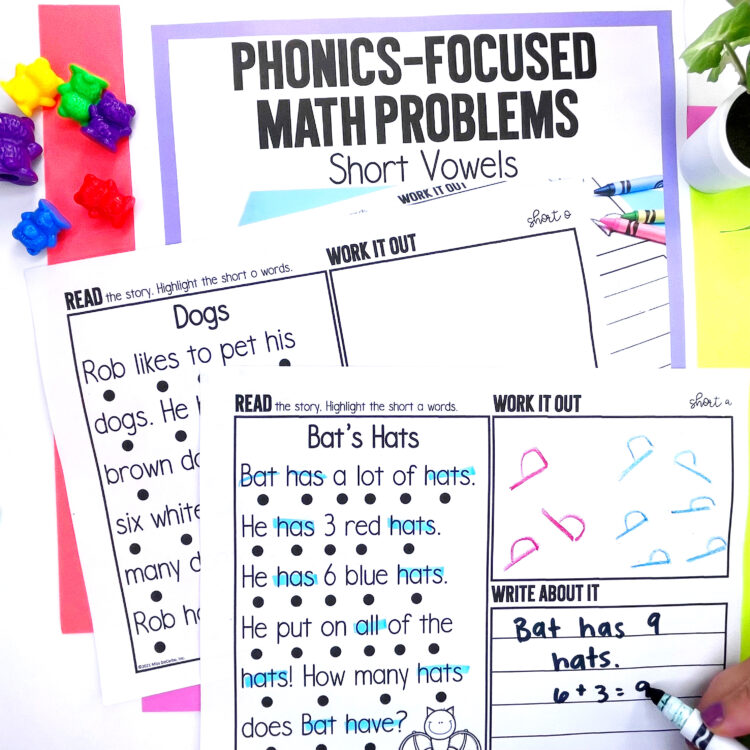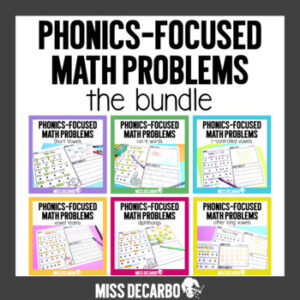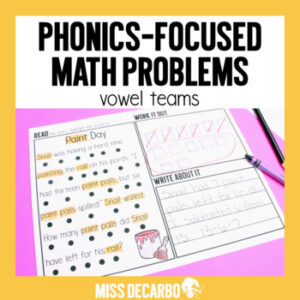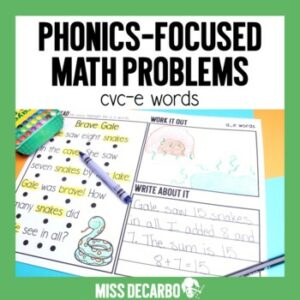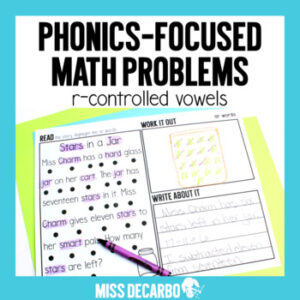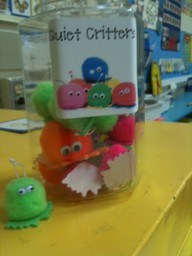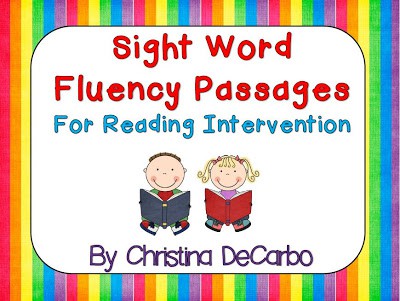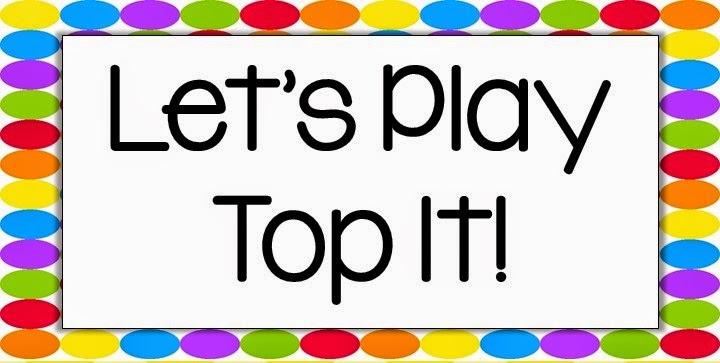3 Easy ways to Integrate phonics and math
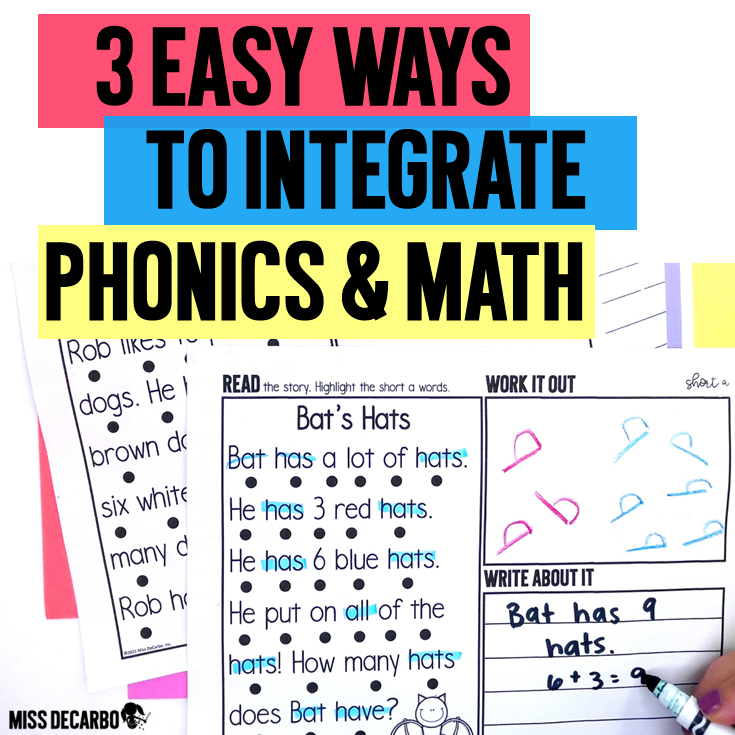
Let’s integrate phonics and math skills in the classroom! Adding decoding practice directly into your math block will give students extra practice with phonics and fluency! In addition to the extra decoding practice, students gain confidence and increase their independence when they can truly READ the math problems!
Comprehension skills have to be used when reading and solving mathematical word problems. In order to comprehend those word problems, students need to be able to decode the words and get access to the text! Struggling readers can feel successful during math class when we provide them with opportunities that help them shine!
In this blog post, I’m sharing three easy ways to mix phonics and math into your classroom instruction. You’ll find that these tips are easy, effective, and powerful for student progress!
Use decodable word problems

To help students practice their decoding skills while building essential math abilities, I created decodable word problems!
My Phonics-Focused Math Problems can be used as both whole-group or small-group practice. So often, our young students are capable of solving mathematical word problems, but it is the text complexity that holds them back or decreases their confidence. This resource will help students who are working on different phonics skills have equitable access to story problem texts on their reading level, while also giving you the opportunity to incorporate a little reading into your math time. It’s really a win-win!
You can grab your own copy of Phonics-Focused Math Problems in my TPT store, on my website, or by clicking the picture below:
As your students progress in their decoding skills, they can access word problems to practice newly learned phonics patterns. You can also differentiate your math groups according to their decoding abilities! For example, create a small math group for students working on short vowels, a group for students working on silent e words, and a group working on vowel teams! There are so many possibilities to differentiate for student success with this Phonics-Focused Math Bundle.
Explicitly teach math words
It’s important to take a close look at the high frequency words your students will need to be able to read in order to be successful with word problem questions and directions on math worksheets and tests. When possible, add words and word parts that your students can decode into your spelling lessons that come up OFTEN in beginning word problems and within directions. Below is a list to get you started:
closed syllable level: add, sum, sub, tract, left, less, in, has, did, plus, than
temporary heart words: what, put, have, more, how, show, work, write, are, there, many, does
It’s important to be sure we are helping students orthographically map these words so that they can read them accurately, confidently, and with automaticity. Doing so will add to the success they feel and have when solving mathematical word problems. If you’re looking for engaging orthographic mapping mats that you can use as you work on and practice the words above, check out my awesome bundle of Orthographic Mapping Mats!
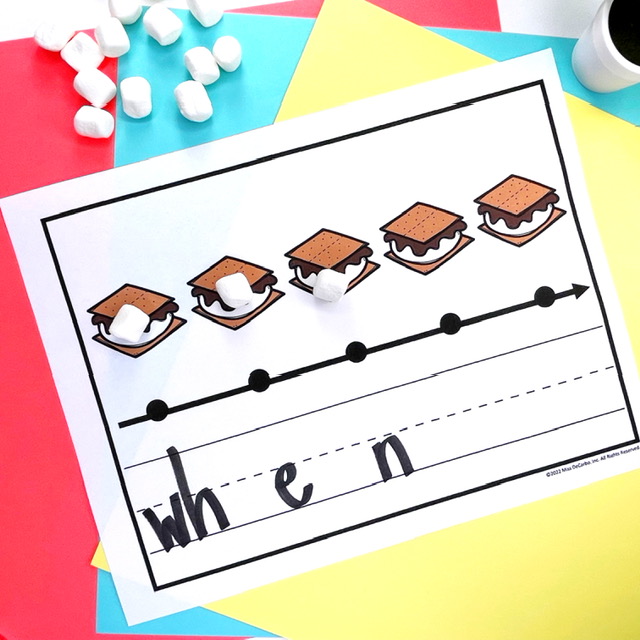
phonics, math, and writing integration
The best way to ensure that students have mastered a phonics skill is to look at their spelling accuracy within their writing pieces. You can easily integrate phonics and encoding skills (spelling) into your math block by having students WRITE their own math word problems! When students are writing their word problems, have them utilize and focus on the phonics skill(s) you want them to practice. Not only does this activity require them to apply their phonics skills to their mathematical understanding, but it also promotes and fosters their critical thinking skills!
How do we help students write their own word problems?
Give students the answer and have the students create the story and write the word problem question. For example, on the board, write: The answer is ten. You can also list the phonics skill you want them to focus on. (Example: short o) You will want to model, model, model, this as much as possible before they write the problems on their own! In fact, I suggest spending time writing word problems as a whole class before setting them free. It helps to create a short list of short o words with your students before writing the word problem, such as dog, log, and frog. They can now pull from the word list as they write their word problem!
Here’s an example of a possible story: Six frogs are on a log. 4 dogs are on the log. How many frogs and dogs are on the log? The answer to this word problem is 10, just like you wrote on the board. It is also filled with seven opportunities for your students to read, spell, and reread short o words. What an excellent class warm-up activity and/or small group math activity that embeds phonics and math skills into your lesson plan!
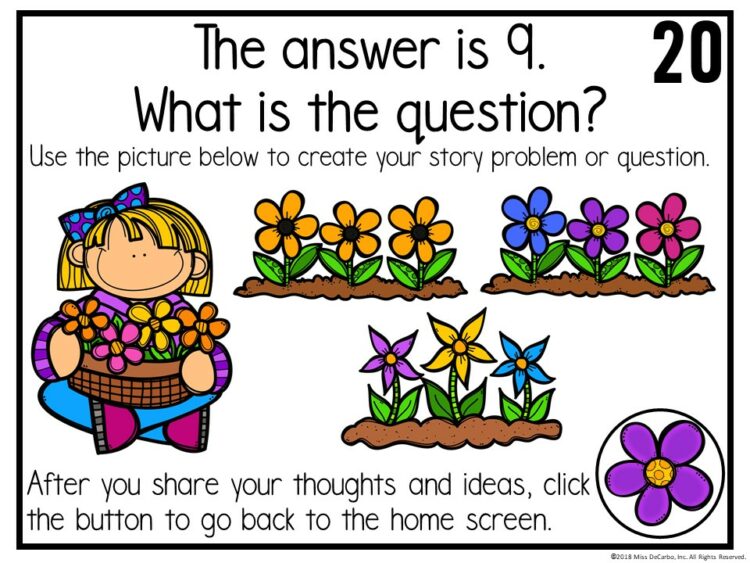
Phonics + Math = Success!
Decodable math problems, word mapping, and writing integration are just three ways that we can integrate phonics and math into our classrooms. We know from research that there is a strong correlation between reading skills and a student’s understanding of math concepts. In fact, early reading development plays a critical role in our students’ future math progress (Shanahan, 2022). This knowledge is powerful as classroom teachers! Any opportunities we can give our students to practice their reading skills, especially when we can integrate them into our math block, is a win-win for all kids. The result will be more confident and more successful mathematicians, critical thinkers, and readers!
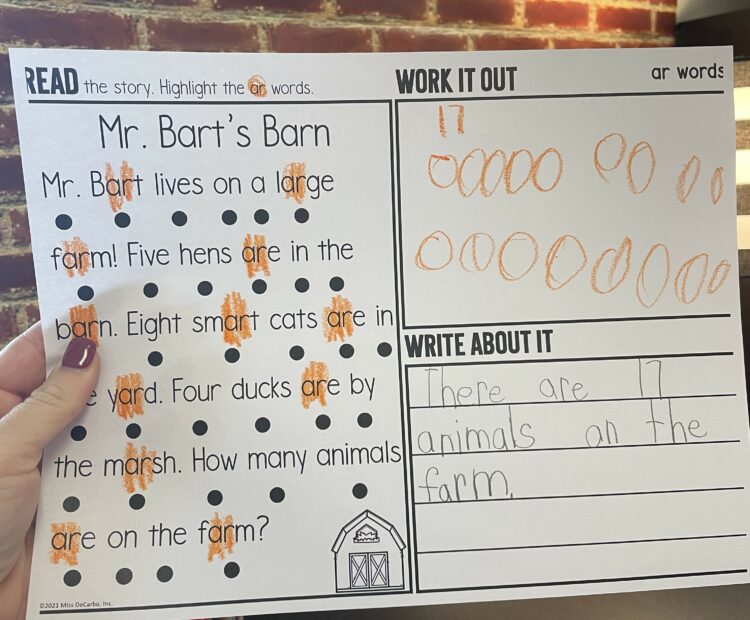
For resources to help you integrate phonics and math, such as the Phonics-Focused Math Problems shown in the photo above, check out the products featured below:
Be sure to share this blog post with a colleague! Feel free to use the image below to pin, save, and refer back to this post.
